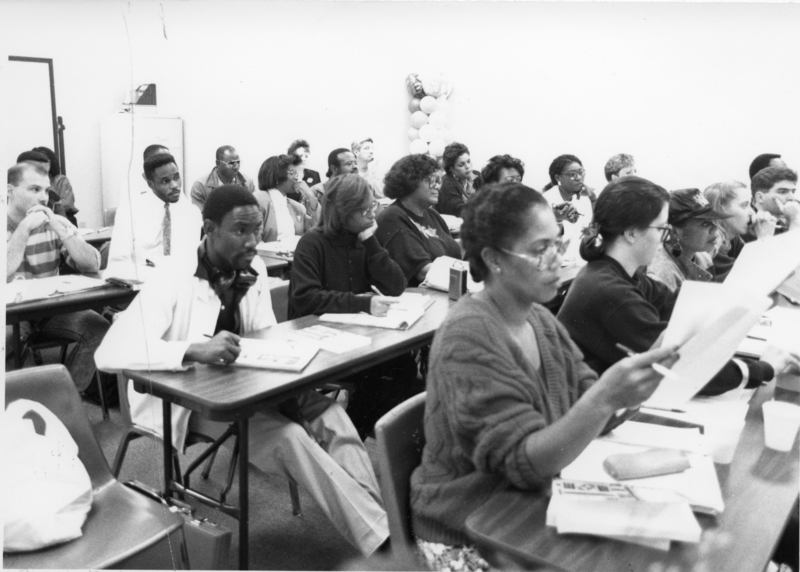Tacoma Bridge Program
The Bridge Program was created by Tacoma Community College in partnership with Evergreen-Tacoma in 1985. This was a lower-division, two-year program that served students who were interested in enrolling in Evergreen’s upper-division program for a bachelor’s degree, but who did not have the required number of credits. Courses included in the program were theme-based and emphasized collaborative learning and community-based project work. In the early years of the program, the students were more often retired military men and were 90% African-American. In 1989, the population of the program shifted from average age of 45 to 33, and to 85% female, while still remaining around 90% African-American.
The curriculum of the Bridge Program was driven by Evergreen’s design, learning outcomes, and philosophy and the importance of intergenerational participation was stressed. This meant including family members and community members in student assignments and presentations. In 1992, this program received national recognition for its ability to retain minority students and its successful four-year transfers.
One of the courses at Evergreen Tacoma was taught by Evergreen faculty member, Ratna Roy. It was a three-quarter program in which students interrogated theater from a broad historical perspective. They learned the basics of movement, acting, and dance. The course also focused on literature by indigenous peoples and scriptwriting.
